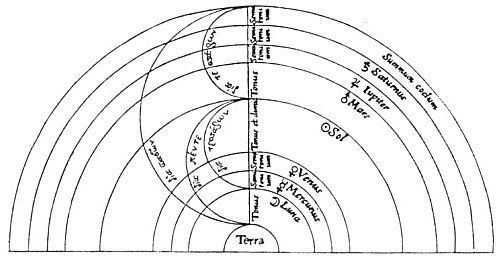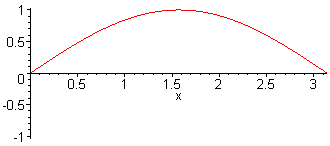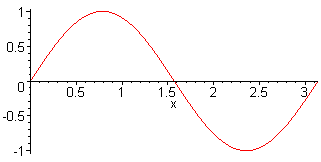| View previous topic :: View next topic |
Wile E. Coyote
In: Arizona
|
|
 |
|
| Ishmael wrote: | | The first 8 letters of the English alphabet are A B C D E F G H. With the exception of H, these are the letters of the musical "octave," a word which means "eight." The place of H, on the musical scale, is substituted by the repetition of A, as the octave repeats over and over again. But as we can see, H is the letter A, with the top open instead of closed. H is, in fact, the A repeated. It is the ancient "Hash" symbol, representing the first thing---the A-tzar--the atom. |
https://en.wikipedia.org/wiki/Ansuz_(rune)
Ansuz is the conventional name given to the a-rune of the Elder Futhark, ᚨ. The name is based on Common Germanic *ansuz "a god, one of the main deities in Germanic paganism".
|
NB. paradigm error. There is no "main deity".
Still.....lets persevere..
In the Norwegian rune poem, óss is given a meaning of "estuary" while in the Anglo-Saxon one, ōs ᚩ takes the Latin meaning of "mouth". The Younger Futhark rune is transliterated as ą to distinguish it from the new ár rune (ᛅ), which continues the jēran rune after loss of prevocalic *j- in Proto-Norse *jár (Old Saxon jār).
Since the name of Gothic a.svg a is attested in the Gothic alphabet as ahsa or aza, the common Germanic name of the rune may thus either have been *ansuz "god", or *ahsam "ear (of wheat)". |
There we go again..........
|
|
 |
|
 |
|
Hatty
Site Admin

In: Berkshire
|
|
 |
|
| And the symbol for 1.618 is Φ---made by placing a D immediately right of a C. |
In the semitic alphabet the third letter is gimel ج and the fourth letter is dalet د (dalet or daled being 'a non-sacred way of referring to God' according to Wiki). With a vav, which can be a short 'O' as well as v/w, in the middle, you have a literal transcription of GOD.
|
|
 |
|
 |
|
Wile E. Coyote
In: Arizona
|
|
 |
|
 |
|
Boreades

In: finity and beyond
|
|
 |
|
| Ishmael wrote: | | The first 8 letters of the English alphabet are A B C D E F G H. With the exception of H, these are the letters of the musical "octave," a word which means "eight.". |
The Alphabetic Music theme starts with A and B and the Pythagorean Intervals.
A = Alpha, for Unison, and the original ratio 1:1
B, when drawn as two "a"s together, is the first Octave, and the ratio 2:1
|
|
 |
|
 |
|
Ishmael

In: Toronto
|
|
 |
|
|
I wish some of you would include sufficient information in your posts for me to get your points. Last three posts left me scratching my head. And what am I to conclude?
|
|
 |
|
 |
|
Boreades

In: finity and beyond
|
|
 |
|
"a" or Alpha is the pictogram symbol for a resonating string on a Monochord.
"b" or Beta is the symbol for when the length of the string is halved, and plucked. It produces a pitch an octave higher and the string vibrates at twice the frequency of the original (2:1)
Fundamentals for any Greek philosophies on harmony, like the Music Of The Spheres.

|
|
 |
|
 |
|
Ishmael

In: Toronto
|
|
 |
|
|
So you are saying that the shape of the B symbol actually expresses the shape of this musical resonance?
|
|
 |
|
 |
|
|
|
|
 |
|
There are 26 letters in the English Alphabet.
|
There are now.
In the year 1011, a monk named Byrhtferð recorded the traditional order of the Old English alphabet.[2] He listed the 24 letters of the Latin alphabet first (including ampersand), then 5 additional English letters, starting with the Tironian note ond (⁊), an insular symbol for and:
A B C D E F G H I K L M N O P Q R S T V X Y Z & ⁊ Ƿ Þ Ð Æ
(Wiki)
Wiki also says that after the conquest of Greece in the first century BC in the time of Claudius the letters Y and Z were adopted to form the classical Latin alphabet of 23 letters.
I'm not trying to dismiss your fascinating idea for the sake of it but am just trying to make it hang together in my own mind... if the uncanny relationship between the English alphabet, Phi and Pi you describe is deliberate, one has to ask why and when was this relationship codified?
I daresay you already have a theory about this Ishmael...
|
|
 |
|
 |
|
Wile E. Coyote
In: Arizona
|
|
 |
|
| Ishmael wrote: | | I wish some of you would include sufficient information in your posts for me to get your points. Last three posts left me scratching my head. And what am I to conclude? |
All I can say is that I tried to move Dan's thread on with some original ideas, which I spelled out. Fair play to Auro, his idea attracted a lot more interest. Clearly when I contribute to others' ideas they will be less thought out.
|
|
 |
|
 |
|
Ishmael

In: Toronto
|
|
 |
|
| aurelius wrote: | | I daresay you already have a theory about this Ishmael... |
Nope. But it sure does seem that someone deliberately engineered the English alphabet. 26 is a very interesting number to use and to place the "P" letter as the 16th letter? Uncanny.
|
|
 |
|
 |
|
|
|
|
 |
|
| In the semitic alphabet the third letter is gimel ج and the fourth letter is dalet د |
Hatty, there may be some people who follow this library (not the most regular contributors obviously, but those like myself, before I checked), who would assume the Semitic gimel symbol was Hebrew when in fact it is Arabic.
All Semitic, folks!
|
|
 |
|
 |
|
Boreades

In: finity and beyond
|
|
 |
|
| Ishmael wrote: | | So you are saying that the shape of the B symbol actually expresses the shape of this musical resonance? |
Yes. The top half, above the horizontal line, which represents the unplucked or static string. The bottom half is the mirror image of the top half.
Alpha

Beta

|
|
 |
|
 |
|
Ishmael

In: Toronto
|
|
 |
|
|
I don't get it.
|
|
 |
|
 |
|
Mick Harper
Site Admin

In: London
|
|
 |
|
|
I am addressing the question of the Latin alphabet right now in The Second Dark Age thread. Though alas it is much less radical than youse guys.
|
|
 |
|
 |
|
Hatty
Site Admin

In: Berkshire
|
|
 |
|
| aurelius wrote: | | In the semitic alphabet the third letter is gimel ج and the fourth letter is dalet د |
Hatty, there may be some people who follow this library (not the most regular contributors obviously, but those like myself, before I checked), who would assume the Semitic gimel symbol was Hebrew when in fact it is Arabic.
All Semitic, folks! |
In (modern) Hebrew the gimel is written as in Arabic but minus the dot and facing the other way, like a mirror image.
Interestingly 'g' exists in the Persian (Farsi) alphabet written as گ which closely resembles a Hebrew gimel.
|
|
 |
|
 |
|
|